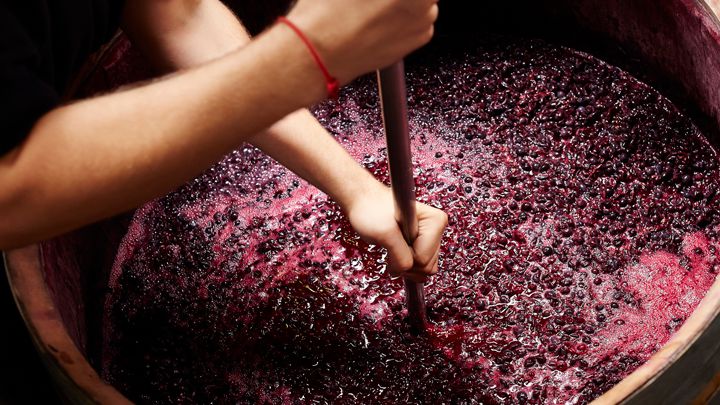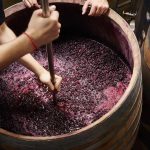Growing Grapes
Grapes grow on vines. There are many different types of grapes, but the best wine grape is the European Vitis vinifera. It is considered optimal because it has the right balance of sugar and acid to create a good fermented wine without the addition of sugar or water.
Harvest
Weather is a major factor is determining whether a year is going to be a “good vintage” (or “year”). For example, was there enough heat during the growing season to lead to enough sugar? At harvest time, the short-term effects of weather are quite important. To produce great wine, the fruit should have a high (but not overly high) sugar content (“brix”). Think of raisins. As the fruit dries, the water evaporates. What is left is the sugary fruit. If it rains just at the point the wine grapes are ready, and before the grapes can be harvested, the additional water will cause the water level to increase, and the brix will go down. Not good. (You might ask, why not just add some sugar in the wine making process? Some do. Also considered “not good.”) Every year the wine grape grower plays a game of chance and must decide when to harvest. Simplistically, if you knew it wasn’t going to rain, you would just test the brix until it was just right, then harvest. If you harvest too soon, you will probably end up getting a wine too low in alcohol content (there won’t have been enough sugar to convert to alcohol). These wines will be “thin.” If you delay harvest, there may be too much sugar, which leads to too low acid content. This also affects the taste (and the aging possibilities) of the wine.
Initial Processing of the Grape Juice
Grapes can (and might still) be crushed by stomping on them with your feet in a big vat. But a more practical way is to use a machine which does the job (and at the same time, removes the stems). What you get may or may not get immediately separated. Skin and seeds might immediately be removed from the juice. Separation may not immediately occur (especially for red wines), since skins and stems are an important source of “tannins” which affect wine’s taste and maturity through aging. (See Aging Wines.) The skins also determine the color of the wine (see WHAT IS WINE). Maceration (the time spent while skins and seeds are left with the juice) will go on for a few hours or a few weeks. Pressing will then occur. One way to press the grapes is to use a “bladder press,” a large cylindrical container that contains bags that are inflated and deflated several times, each time gently squeezing the grapes until all the juice has run free, leaving behind the rest of the grapes. You can also separate solids from juice through the use of a centrifuge.


